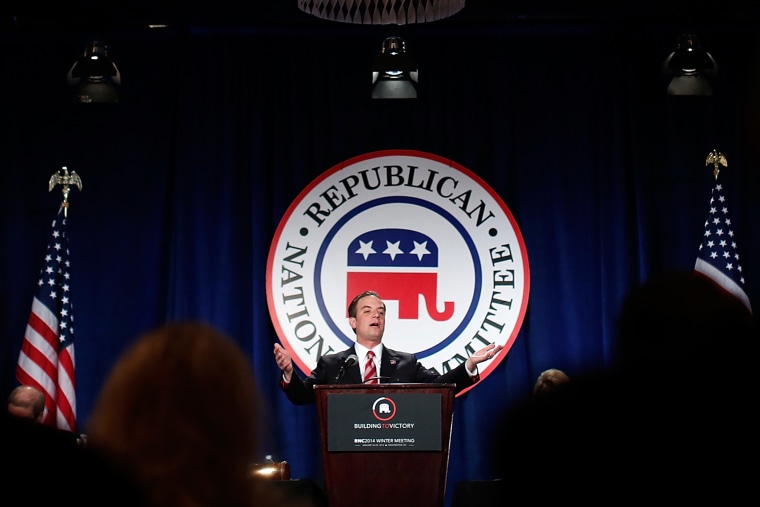There's something to be said for post-election "autopsies." Once an election cycle has come and gone, it makes quite a bit of sense for party officials to take stock, acknowledge what worked, scrutinize what didn't, and prepare to apply those lessons going forward.
And with that in mind, Sean Spicer, the Republican National Committee's communications director,
announced over the weekend that RNC has completed a new study of the 2014 election cycle and released
this 22-page report.
Working with our partners at the RGA, NRSC, NRCC, and RSLC, we developed a very aggressive, early, and targeted approach for 2014. Today the GOP is the majority party at every level except the presidency. While the news media has ignored or discounted the extraordinary gains that began in 2010 and accelerated in 2014 and 2015 (and in special elections since then), it is a fact that Republicans enter the 2016 campaign with more office holders than at any point in the party's history. The challenge now is to apply the lessons of a constantly evolving political process to winning the 2016 election at every level including the presidency.
If you missed hearing about this report, that's probably because the RNC didn't make much of an effort to publicize it. The party did not issue a press statement to note the autopsy's release; there was no mention of the document on the RNC's blog; there were no references to it on the RNC's Twitter account; and a quick search on Google News this morning pointed to literally zero articles about the report.
In fact, were it not for Sean Spicer's tweet -- published mid-day on a Saturday -- it might have gone unnoticed altogether.
Regardless, what exactly did the RNC find in its look back at 2014?
Not surprisingly, Republicans are still delighted by their recent gains, and for good reason: by practically every metric, 2014 was an excellent cycle for the party. But while much of the autopsy celebrates the GOP's recent victories, there was a point raised on page 5 of the new document that jumped out at me:
The Republican opportunity has also been strengthened and expanded because of the Republican National Committee's Growth and Opportunity Project and the bold changes which grew out of it and which Chairman Priebus has implemented vigorously.
Wait, the RNC believes Republicans are doing well because the party stuck to the blueprint the RNC came up with after the 2012 elections?
There's a fair amount of evidence to the contrary. As we recently
discussed, the party's post-2012 autopsy encouraged congressional Republicans to pass comprehensive immigration reform, but the GOP lawmakers refused. The report urged party officials to moderate their position on gay rights and the culture war, but Republicans ignored the suggestion. The document said Republicans must be willing to start reaching out beyond just conservative media organizations to get the party's message out, and officials and candidates did the opposite.
In March 2014, I published
an overview on the autopsy and Republicans' willingness to implement its suggestions in the year following its unveiling, and at the time, the only changes the party was willing to make was to the mechanics of its presidential nominating process -- changes, ironically, many in the party
later regretted.
What "bold changes" did the RNC make as a result of a document that was widely ignored?
